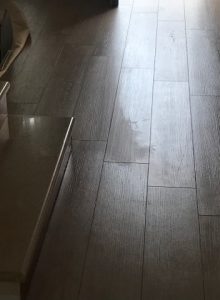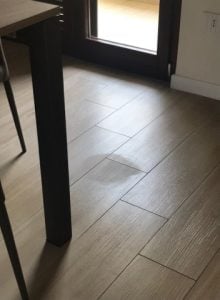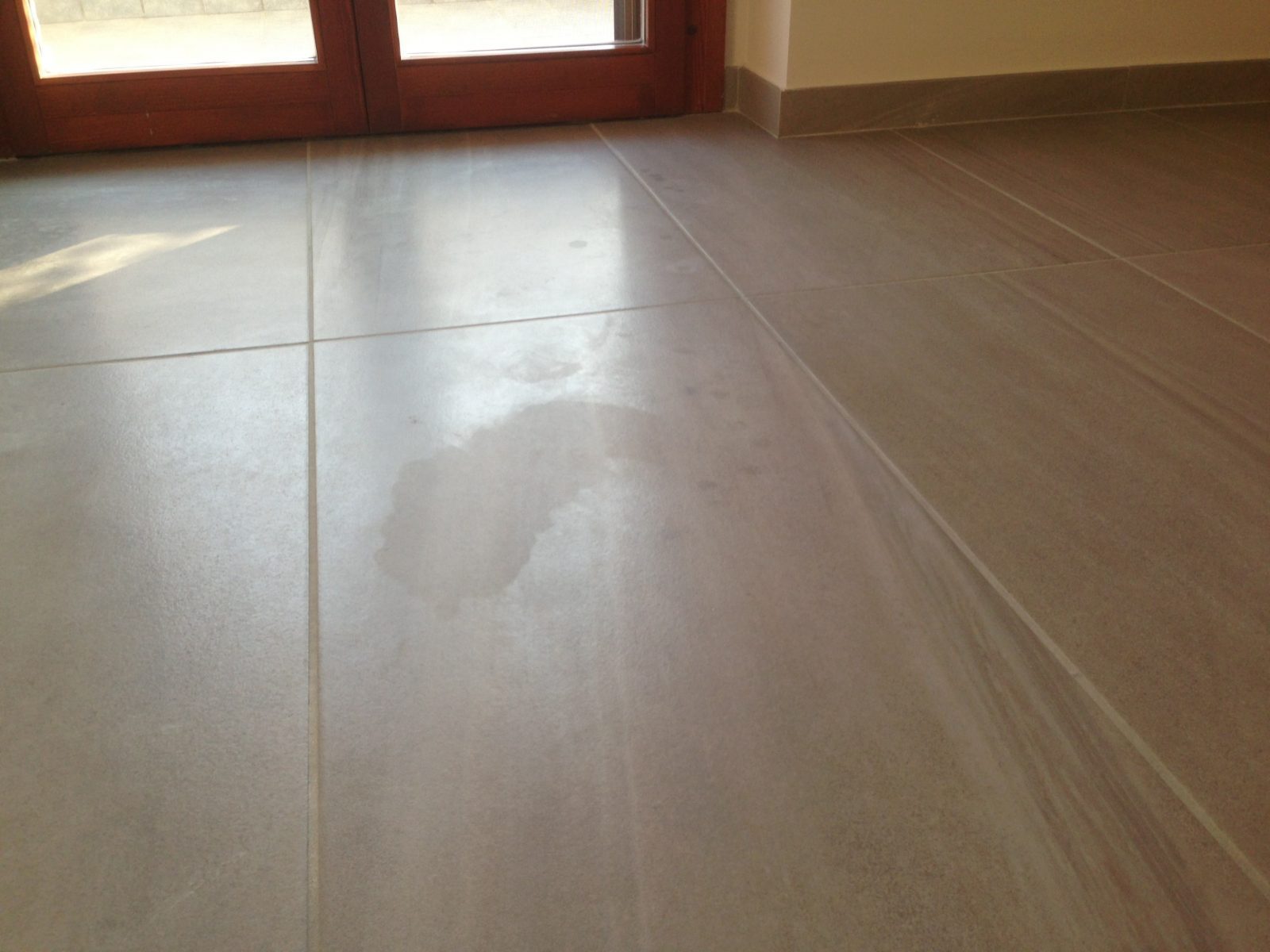So Fido couldn’t hold back his excitement when you came home from work, and now you’re stuck with a mark that won’t go away however much you wash it?
Someone spilled some fruit juice at your son’s birthday party and now your floor looks like a Jackson Pollock painting?
The appearance of “pale blotches” on a porcelain or ceramic floor can have a wide variety of causes. They seem like hopeless stains, and all too often are treated with unsuitable or ineffective products… the pale patch stubbornly remains, giving you all the misery of an irreparably ruined floor.
But restoring the floor’s original beauty and regaining the satisfaction you had when you first chose it in the showroom is easier than you think.
Pale stains or patches are often caused by the reaction of acidic substances (such as urine, fruit juices, wine, vomit…) that are able, ironically, to dissolve residues of dirt lying on the surface. That’s why they’re called “clean stains”. They mainly occur for one of two reasons: failure to wash the floor immediately after laying, or the daily build-up of residues due to incorrect washing.


Stains due to failure to wash immediately after laying
Once the floor has been laid and work on the site has finished it’s important to wash floors correctly with a buffered acid detergent such as DETERDEK, which ensures maximum effectiveness while being extra gentle on the surface itself. Failure to do this creates a strong likelihood that building work residues – very often invisible to the eye – may be left on the floor, enabling everyday dirt to take hold more easily.
Click here for information on how to clean correctly immediately after laying
Stains due to the use of detergents with a brightening or shining effect
Other causes of dirt build-up are hard water residues or incorrect washing: over time, the shining additives and scents contained in common detergents create layers that dull the surfaces being washed. These can be eliminated periodically using an alkaline grease-removing detergent such as FILAPS87, which contains no caustic soda and is therefore very gentle on surfaces. FILAPS87 is also ideal for deep cleaning of outdoor paving in porcelain stoneware, ceramic, natural stone, terracotta, clinker and concrete.
So which product should I use for everyday cleaning?
For the best possible maintenance of a stoneware or ceramic floor it’s good practice to use a pH-neutral detergent that contains no shining additives or scents – just like FILACLEANER, which leaves no waxy or silicon residues. 3 capfuls (25 ml) of the product dissolved in 5 litres of water are enough to keep the whole floor clean, with no need to rinse.

4 Replies to “Pale stains on a porcelain floor? Here’s how to remove so-called “clean stains””
Hello. I am trying to get rid of clean stains on my terrazzo. I tried using the fila cleaner and stain remover but it didn’t do the trick. Any other product you could advise? Thanks, Charles
Good Morning Charles,
Thank you for the pictures. Regarding the situation, I have to inform you that what you see seems to be acid aggressions.
Those happen when a substance with a pH lower than 7 falls on the surface. The acid substances corrode the surface creating white halos.
Those cannot be restored with a cleaner since they are physical alterations of the surface.
The pieces of marble, infact, are naturally sensitive to acids.
Furthermore they happen even if the surface is treated since the sensibility to acids is a natural characteristic of the marble.
In order to completely solve the situation, we suggest proceeding with a mechanical repolishing of the floor.
As an alternative we can suggest to proceed with the use of a FILA product that can hide a little bit the aggression. It won’t cover it completely, but it can make them less evident.
when the surface is dry, proceed with the application of CLASSIC, a glossy effect wax. Apply the wax with a fleece applicator.. Let it dry, then apply a second coat. When the floor is dry, polish the surface with a wooden cloth.
Every 3 -5 months, reapply a coat of diluted wax. In this way the aggression will became less evident.
It does not protect against acids.
For the ordinary maintenance, use CLEANER PRO diluted 1:200.
Kind regards, Giulia
i have rex black gloss tile. every time we clean the floor with mr clean and warm water {with 100% microfiber cloth} after dry we see the mark’s from the mop. how can we prevent?
Hi Joe, our technical assistance has contacted you via email to help you find the best treatment.
Regards
Laura